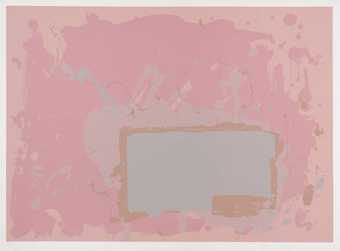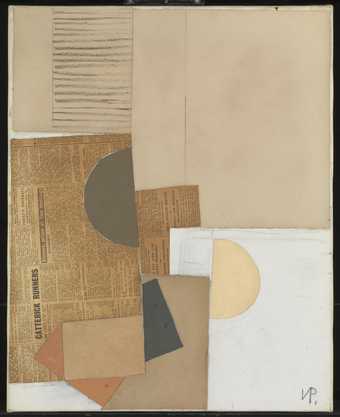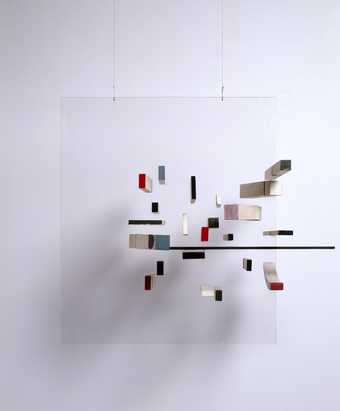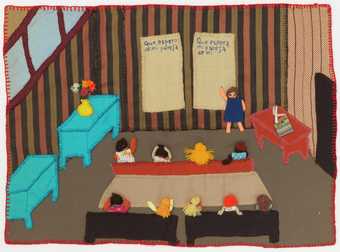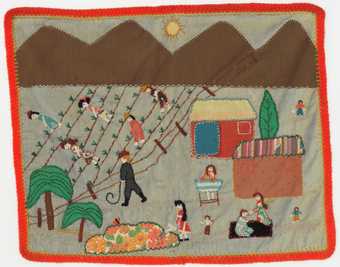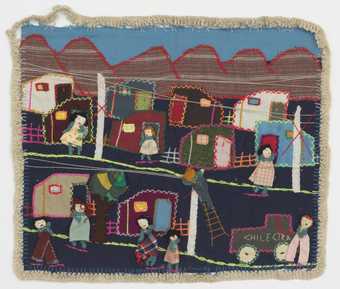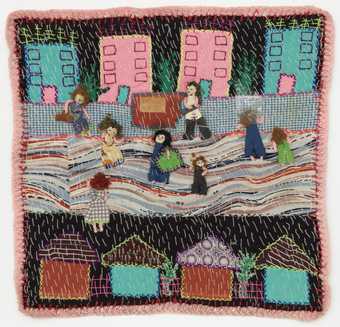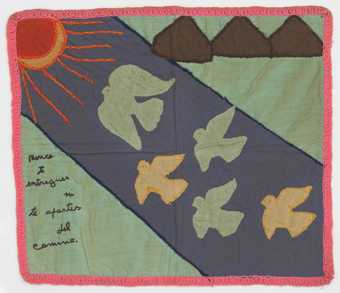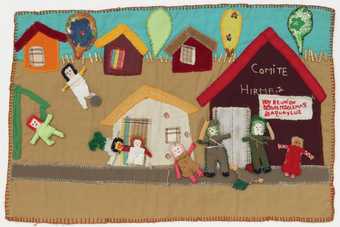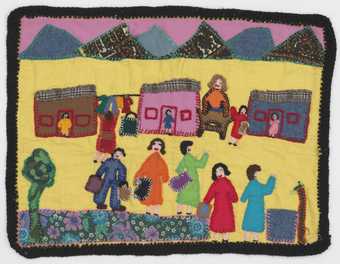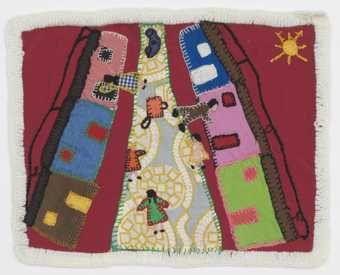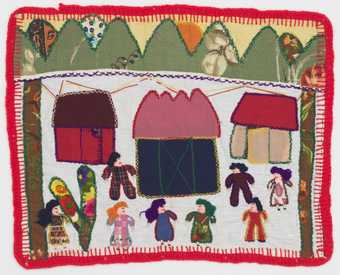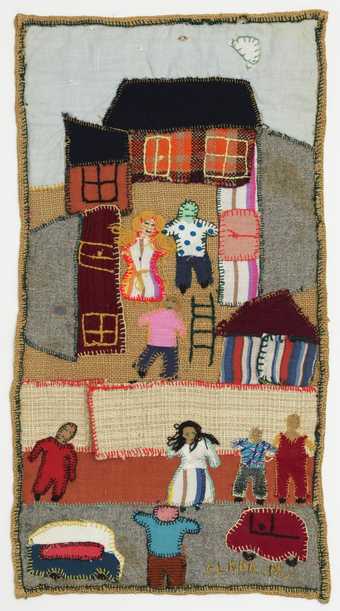Sorry, no image available
Not on display
- Artist
- Olga de Amaral born 1932
- Original title
- En gris y rosado
- Medium
- Wool and cotton
- Dimensions
- Support: 2100 × 715 mm
- Collection
- Tate
- Acquisition
- Presented by the artist 2016
- Reference
- T14880
Summary
In Grey and Pink 1966 is a long hung tapestry, with a complex woven structure, executed in muted shades of grey, brown and two shades of pink. Its forms alternate between single and grouped yarn ‘braids’, and woven sections incorporating woven geometric forms or woven strips, often superimposed on a woven ground. Born in Bogotá, Colombia, de Amaral gained a degree in architectural design before moving to the United States to study fabric art at Cranbrook Academy of Art, Bloomfield Hills, Michigan between 1954 and 1955; Cranbrook was a centre of modernist design and de Amaral focused on learning about colour in textiles.
In Grey and Pink is typical of her earlier work which explored aspects of weaving in relation to modernist principles of structure and colour; these were combined with references to pre-Columbian cultures, particularly Peruvian textiles and architecture which de Amaral studied in depth during the 1950s and 1960s. The muted shades of this work are typical of the natural fibres and organic dyes used in Pre-Columbian textiles and vernacular Andean weaving. In fact, owing to its areas of grouped braids, interspersed with ‘dots’ that might be read as standing in for knots, and its long fringe, In Grey and Pink can be ‘read’ as a form of quipu, a Pre-Columbian device for recording information through an object comprised of a series of knotted strings, that was used both for accountancy or numerical data but is now also believed to have recorded narrative information. The design of de Amaral’s hanging also features shapes that taper upwards and which may refer to the forms of Incan architecture, in which doors and windows are wide at the base and become narrower towards the top; they may also evoke an abstract-pictographic language. The work embodies the way in which de Amaral subtly combined modernist abstraction with key references to the ancient cultures of the Americas, particularly around questions of language and communication of information, in a hybrid play between modernism and indigenism. In later works, such as Alchemy 50 1987 (Tate T14879), de Amaral’s practice developed into a hybrid between fibre art, textile and painting.
Further reading
Matthew Drutt, Edward Lucie-Smith, Juan Carlos Moyano Ortiz et al., Olga de Amaral: The Mantle of Memory, Paris and Bogotá 2013.
Matthew Drutt and Guillermo Bueno, Olga de Amaral, Paris 2015.
Tanya Barson
July 2016
Does this text contain inaccurate information or language that you feel we should improve or change? We would like to hear from you.
You might like
-
John Hoyland Grey / Blue on Pink
1971 -
Victor Pasmore Abstract in White, Grey and Ochre
1949 -
Wendy Pasmore Oval Motif in Grey and Ochre
1961 -
Victor Pasmore Abstract in White, Green, Black, Blue, Red, Grey and Pink
c.1963 -
Unknown woman artist, Chile [no title]
1970s -
Unknown woman artist, Chile [no title]
1970s -
Unknown woman artist, Chile [no title]
1970s -
Unknown woman artist, Chile [no title]
1970s -
Unknown woman artist, Chile [no title]
1970s -
Unknown woman artist, Chile [no title]
1970s -
Unknown woman artist, Chile [no title]
1970s -
Unknown woman artist, Chile [no title]
1970s -
Unknown woman artist, Chile [no title]
1970s -
Unknown woman artist, Chile [no title]
1970s -
Unknown woman artist, Chile [no title]
1970s

